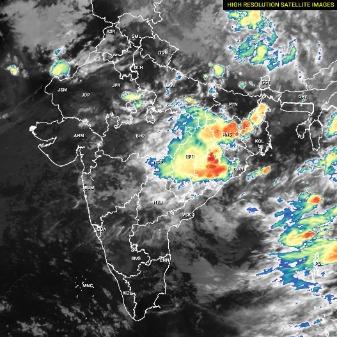RainMap India
Real-time Visualization of Rainfall Patterns
Created on 4th February 2024
•
RainMap India
Real-time Visualization of Rainfall Patterns
The problem RainMap India solves
RainMap India is a dynamic project that revolutionizes the way individuals and organizations engage with and respond to rainfall conditions across the country. By providing real-time visualization of current precipitation patterns, the tool empowers farmers to optimize crop management, enables emergency response teams to prepare for potential disasters, assists urban planners in developing resilient infrastructure, aids tourists in planning travel routes, and enhances weather forecasting accuracy. The image generation aspect involves dynamically creating visual representations of real-time rainfall patterns, leveraging AI techniques to generate informative maps. Temporal dependency is crucial as it enables the system to capture the evolution of rainfall over time, offering insights into changing weather patterns, seasonal variations, and potential trends. This temporal aspect not only enhances the accuracy of real-time precipitation visualization but also facilitates predictive modeling, allowing users to anticipate future rainfall conditions.
Challenges we ran into
Encountering challenges during the development of RainMap India, our foremost obstacle was the absence of a dedicated GPU, hindering the training of a complex Generative Adversarial Network (GAN). The GAN, with a substantial size of 772 MB and an architecture comprising 30 million parameters, struggled in this resource-constrained environment. As a cloud-based environment was utilized for model development, the absence of a GPU became a limiting factor. The ETL (Extract, Transform, Load) process, essential for generating CSV files, faced a separate bottleneck on a Windows system due to CPU constraints, resulting in prolonged execution times.
Furthermore, the availability of data posed a challenge, particularly for advanced models such as Vision Transformers (ViTs), where the existing dataset fell short. ViTs typically demand extensive data for effective training, and our endeavor faced constraints in this regard. Despite these hurdles, it is noteworthy that the fundamental model architecture and design exhibited promise. Dummy tensors, used as a workaround in the absence of a GPU, showcased the model's potential success under more favorable conditions, provided there is access to ample computational resources and a more extensive dataset.
Navigating through these constraints underscored the importance of computational resources, especially GPUs, and prompted considerations for optimizing model architectures and data augmentation strategies. These insights lay the foundation for potential refinements and enhancements in subsequent iterations, illustrating the adaptability and potential of RainMap India given the right conditions.
Tracks Applied (1)
Core Machine Learning
Technologies used
